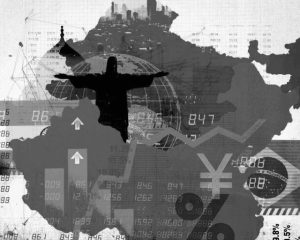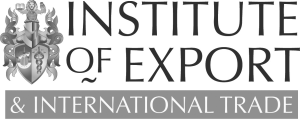Anyone who has ever spoken to me about international trade, will know that I am a huge champion of fast growing, emerging markets, and with good reason – research by HSBC this year predicted that approx. 70% of future world growth will come from emerging economies.
The Export Department works with micros and SMEs, and it saddens me that we do not have more of these profile companies capitalising on the opportunities these emerging markets offer. It is certainly not for a lack of data on the economies themselves, or a lack of effort on the part of bodies like the BCC, DIT, or UK-ASEAN Business Council to forge deep and productive relationships with their counterparts in these markets to facilitate bilateral trade. I believe it is fear of the unknown, as is often the case with exporting into new and different (but exciting) new markets. Yes, these markets can pose cultural, language, infrastructure and in some cases corruption considerations, but these are all risks that can be mitigated against, and the returns are game changing.
Asia is a region for which I have long held a real fascination, it is a region that represents significant opportunities for British exporters. You may be surprised to learn that five of the fastest growing economies globally are in Asia, in fact it is estimated that by 2030, the region will represent 35% of global GDP (equivalent to the Eurozone and US combined), be home to 66% of the global middle-class, and account for 59% of global consumption.
I thought it might be helpful to put these countries ‘under the spotlight’ in order to highlight opportunities and areas that UK exporters may need to consider as part of their exporting plans. So here goes:
BANGLADESH
With GDP growth of 7.4%, Bangladesh is the 3rd fastest growing market globally with the 5th largest population in Asia. Bangladesh’s economy has grown on average 6% per year since 2005, quite extraordinary when you consider it has achieved this against a backdrop of political instability, poor infrastructure, insufficient power supply, and slow economic reform implementation. Clothing and garments represent the vast majority of the country’s industry and indeed some 80% of its exports. What can British companies expect? Well, it is a market where English is spoken widely, and there is strong consumer demand for products, equipment and services. British goods are highly regarded and considered reliable. Manufacturers on capital machinery will also benefit from concessionary import duty. Consumers can be price sensitive, after all they have had access to low priced Indian and Chinese goods across most sectors for some time. British manufacturers need to differentiate their offerings around quality, total cost of ownership, training provision, and after sales care. Bangladesh is listed 149 on the 2018 Corruption Perceptions Index, and indeed corruption is one of the major challenges affecting UK companies, ‘speed money’ and ‘under the counter payments’ are prolific and companies should make sure they perform regular due diligence to avoid falling foul of this practice. UK exports to Bangladesh are dominated by services which accounted for 71% of the £450 million total in 2013 (Source: DIT). Goods exports making up the remainder, included:
- nuclear reactors, boilers, machinery and mechanical appliances / parts
- electrical machinery and equipment / parts; sound recorders and reproducers, television image and sound recorders and reproducers, and parts / accessories
- iron and steel
- residues and waste from the food industries; prepared animal fodder
INDIA
India is the 4th fastest growing global market with GDP growth of 7.3%, it also has the 2nd largest population in the Asian region. It is a fascinating and diverse economy ranging from traditional village farming through to a range of modern industries and services. Similar to the UK, India is predominantly a services-based economy with huge success in IT and business outsourcing services; services account for more than two thirds of the country’s output. The country has seen almost 7% GDP growth per annum since 1997, attributed in part to industrial deregulation, privatisation of state-owned businesses, and reduced controls on foreign trade and investment. So, what can UK companies expect? Well, the UK exported some £8 billion to India in 2018, of which 70% was made up of goods. There is a large young demographic (572 million under the age of 24) and an affluent middleclass. UK companies are able to offer goods, technology, services and expertise in the areas that India has identified as critical for rapid economic development including (DIT):
- finance
- infrastructure
- energy efficiency
- vocational skills and education
- healthcare
MYANMAR
With the 12th largest population in Asia, Myanmar is the 7th fastest growing market globally with GDP growth of 6.7%. Myanmar has a fascinating history, only recently undergoing a transition to democracy and seeing the US lift decades-long sanctions in 2016 (EU lifted sanctions in 2013), although the US has recently imposed new sanctions in relation to what it considers human rights violations and abuses. It is an economy that has an abundance of natural resources and a young labour force, both of which have the potential to attract significant foreign investment in a number of its sectors. So, what can UK companies expect? Well, it is a country that is emerging from some 50 years’ worth of sanctions, so it is a challenging market. Myanmar was listed 132 on the 2018 Corruption Perceptions Index, and corruption exists at all levels of the economy so extreme care must be taken when appointing local partners, etc. There is little to reference in terms of UK-Myanmar trading history because of the sanctions imposed, however, main UK exports to date have been (DIT):
- road vehicles
- heavy machinery
- transport vehicles
Current major opportunities exist in the areas of Energy, Financial and Professional Services, Healthcare and Pharmaceuticals, Education and Skills. Slightly lesser opportunities lie in the infrastructure, agriculture, aerospace and retail sectors.
LAOS
Laos has a population of just over 7 million and GDP growth of 6.7% makes it the 8th fastest growing economy in the world. The country is a communist state whose government has been encouraging private enterprise since 1986 resulting in healthy economic growth of 6%+ over 20 years, this has further accelerated to almost 7% over the last decade. So, what can UK companies expect? The country is heavily dependent on its exports of natural resources. Metallurgy is an important industry, increased foreign investment will help the country develop substantial deposits of coal, gold, bauxite, tin, copper, and other valuable metals. This actually links with opportunities for UK companies, as well as an imperative requirement for skills in the education sector (current education provision is very basic and improvement is considered crucial for the future of the country), the country also needs mining sector expertise and equipment, this incorporates diggers, through to sophisticated software and mining technology.
VIETNAM
Vietnam is the 8th largest country in Asia with a population of 96.4 million and is the 9th fastest growing market globally with GDP growth of 6.6%. A stable political system, young population, and healthy manufacturing sector has enabled the country to attract strong levels of foreign investment which have served to propel economic growth. So, what can UK companies expect? Well, as with all the aforementioned markets, extra care needs to be taken around avoiding corruption, although the country actually ranks better than the other 4 markets on the 2018 Corruption Perception Index (117). The country also suffers from a lack of infrastructure, skills, and IPR enforcement; English is not widely spoken so a translator or interpreter is often a requirement. UK exports to Vietnam in 2014 were £300 million, the top 10 goods being (DIT):
- medicinal and pharmaceutical products
- power generating machinery
- chemical materials
- professional and scientific equipment
- metal ores
- general industrial machinery
- feed for animals
- fish and crustaceans
- electrical machinery
- specialised machinery
In terms of moving forward, significant opportunities exist in Vietnam for UK businesses in the Energy, Education and Training, Healthcare and Pharmaceuticals, and Mass transport sectors.
This was only meant to be a whistle stop tour around these massively exciting, high growth markets, there is obviously more to know and understand but there is so much opportunity, if we’re just brave enough to reach out and grasp it! There is a lot of free and subsidised support out there, there are ways to minimise exposure to risk, and there is expertise to guide you through the process and help you successfully establish your brand in one of these 5 markets!
For further information regarding this article, or indeed any other export-related matter, feel free to drop me a line at Andrea Collins or give me a call on 07500831800.






















